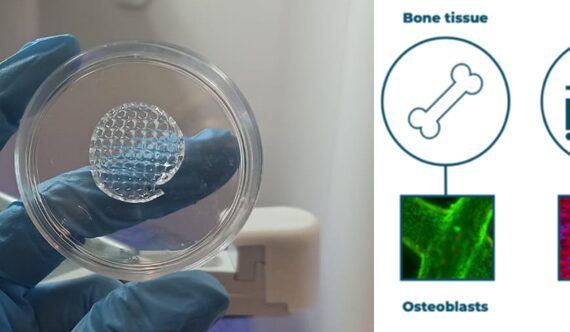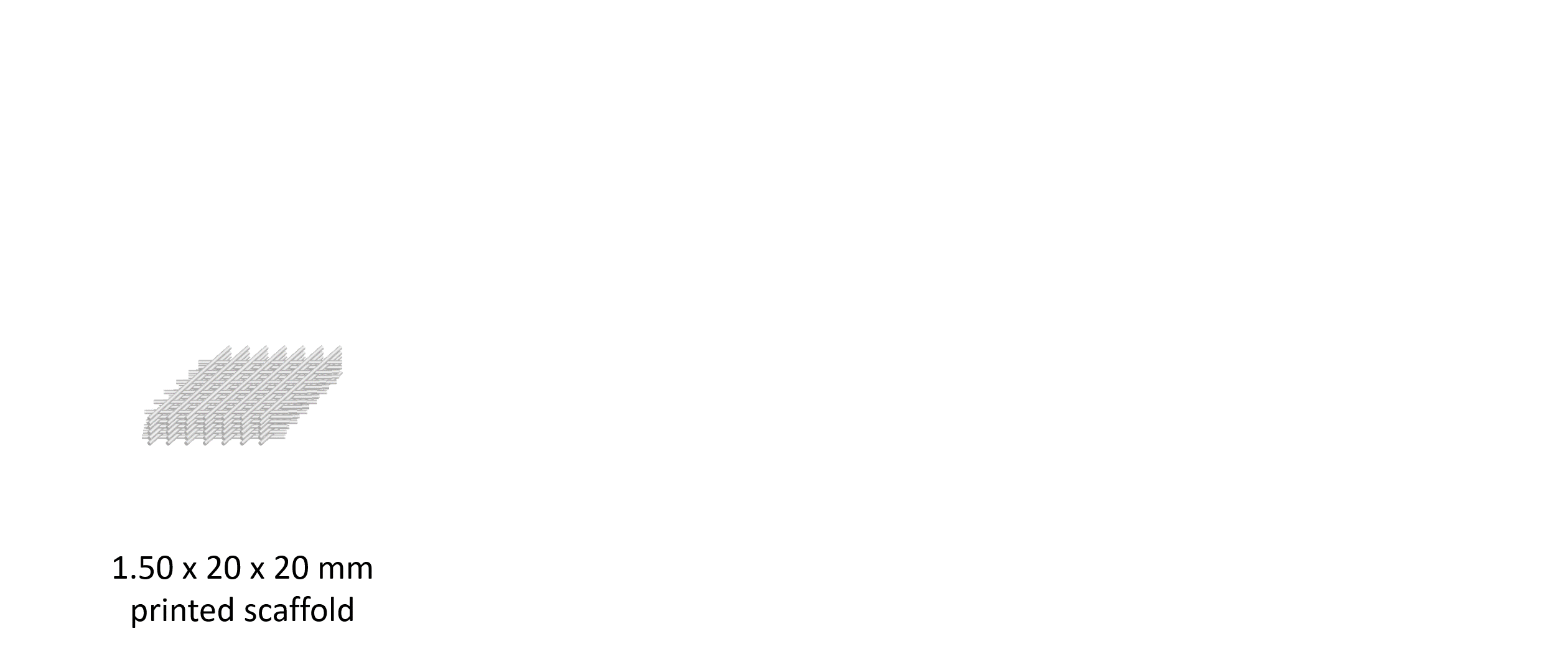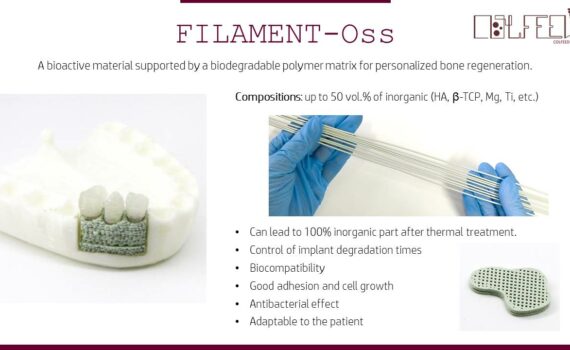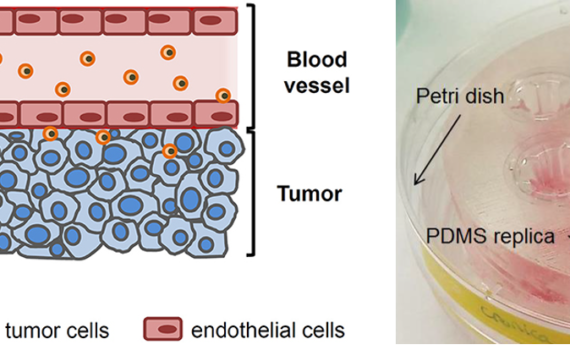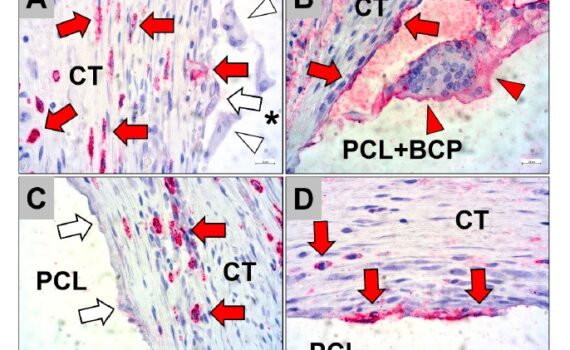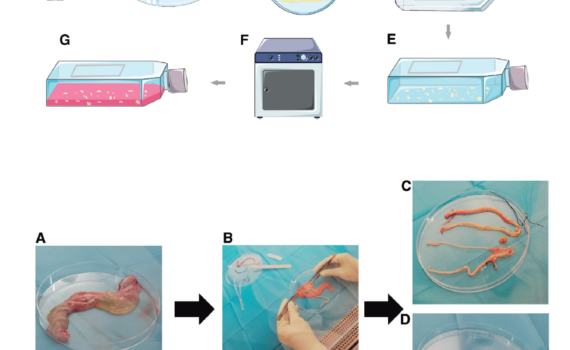+10 For info please contact Sara Román <lab4@regemat3d.com> PLA (polylactic acid) filaments enriched with hydroxyapatite exhibit ideal attributes for 3D printing bioactive scaffolds with applications in tissue engineering and bone regeneration. Hydroxyapatite, a key component of human bone tissue, imparts osteoconductive properties and enhances the biocompatibility of the scaffolds, […]
Other tissue
+10 INTRODUCTION STABLE INX© (BIOINX©) is a synthetic, shear thinning, cell-interactive and non-biodegradable hydrogel bioink which has been specifically designed for the fabrication of scaffolds for tissue engineering. Due to its shear thinning behavior, it allows for an easy printing process. It exhibits a low viscosity at high shear rates, […]
+30 Facilan™ PCL 100 Filament (MW = 50000 g/mol) was used as 3D printing filament. The scaffolds were designed with the software Regemat3D Designer v1.4.4 and printed using a Regemat3D Bio V1® bioprinter (REG4Life, REGEMAT 3D, Granada, Spain) equipped with a glass bed and a 0.4 mm diameter nozzle. The […]
+30 The printing process of FILAMENT-Oss is carried out by a Fused Filament Fabrication process (FFF/FDM). As any other Additive Manufacturing technique, the FFF creates a physical 3D object from a digital model (usually a CAD representation) which is sliced in layers at consecutive height levels. The process requires of […]
+40 Introduction Hypoxia is a common characteristic of many solid tumors that has been associated with tumor aggressiveness. Limited diffusion of oxygen generates a gradient of oxygen availability from the blood vessel to the interstitial space and may underlie the recruitment of macrophages fostering cancer progression. However, the available data […]
+30 In this method we describe the parameters to FDM bioprint scaffolds for Bone regeneration Composed by of 80% PCL that had a MW 80,000 (Polysciences Europe, Hirschberg an der Bergstraße, Germany) and 20% of the synthetic biphasic calcium phosphate bone substitute material (BCP) (synprint, ScientiFY GmbH, Berlin, Germany) with […]
+70 This method describes a robust and reproducible method for ready isolation and expansion of ovine Wharton’s jelly-derived MSC (oWJ-MSC) from umbilical cord (UC) for use in non-clinical research to support proof-of-concept studies addressing safety, efficacy, and the study of mechanisms of action (MoA) of novel MSC-based treatments. The protocol […]


